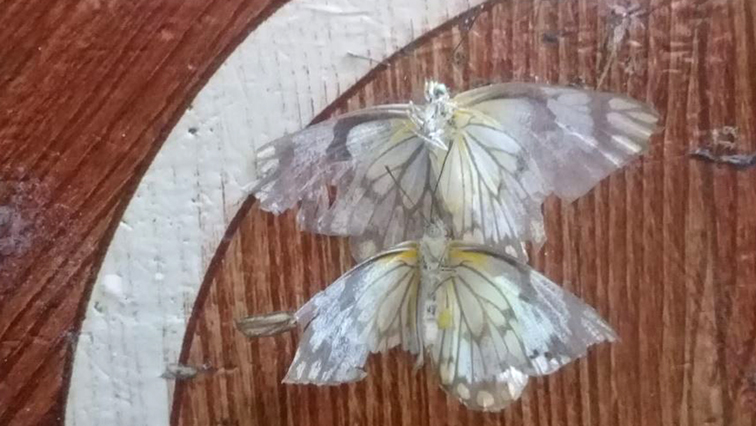The influx of white butterflies in Johannesburg in the past few days has attracted the public’s attention. There are many questions asked on their origin and why now.
SABC News spoke to the Chairperson of the Lepidopterists’ Society of Africa Jeremy Dobson about the issue.
Chasing Butterflies ?? #ButterflyMigration #WhiteButterflies pic.twitter.com/ykTqJGAERe
— Shenay Ganasen (@_Naya777) January 29, 2020
The society is interested in the African butterflies and moths.
Dobson says the kind of butterflies that South Africans are witnessing are the Pioneer Caper Whites (Belenois aurota) and African Migrant (Catopsillia Florella).
He explains, “Generally, Pioneer Caper Whites (Belenois aurota) are the biggest contributors to the ‘migration’, but other species also disperse. Flying with the Pioneer Caper Whites are the African Migrant (Catopsilia florella), which we believe migrate for similar reasons. Occasionally, numbers of Catopsilia florella exceed those of Belenois aurota. A few species of moth also ‘migrate’ in large numbers, but this generally occurs at night and at high altitude. So, is not often reported. It is even less well understood than the Belenois aurota migration!”
This migration happens almost every year and the core-population of the white butterflies in South Africa currently is the Kalahari.
“The core-population of the white butterflies that we are seeing at the moment is the Kalahari, where the larvae feed on Shepherd’s trees (Boscia albitrunca). This is not a true migration. The butterflies will not return, but is a dispersal event. The dispersal is triggered by two factors: Successive years of drought leading to drastic reductions of the parasites that prey on the butterflies, primarily the eggs, larva and caterpillars. These parasites may be viruses, parasitic wasps, spiders, birds, etc. Usually, about 99% of butterfly early-stages are eaten! Secondly, good rainfall, as we’ve experienced recently, leads to favourable conditions and a population explosion of butterflies and subsequent ‘migration’,” says Dobson.
Watch related video below:
However, the migration is not over yet as Dobson says they anticipate it to continue.
“We anticipate that the migration will continue for another two or three weeks, although stragglers may be seen for several weeks after.”
For those tempted to catch theses butterflies and keep them or attack them, Dobson advises against it as the butterflies are not agricultural pests.
“The butterflies are not agricultural pests and there is no reason for anyone to attack them. Having said that, there are billions flying at the moment. So, if one or two are killed by cars or trucks, it won’t make any significant difference.”
Listen to Jeremy Dobson below:


